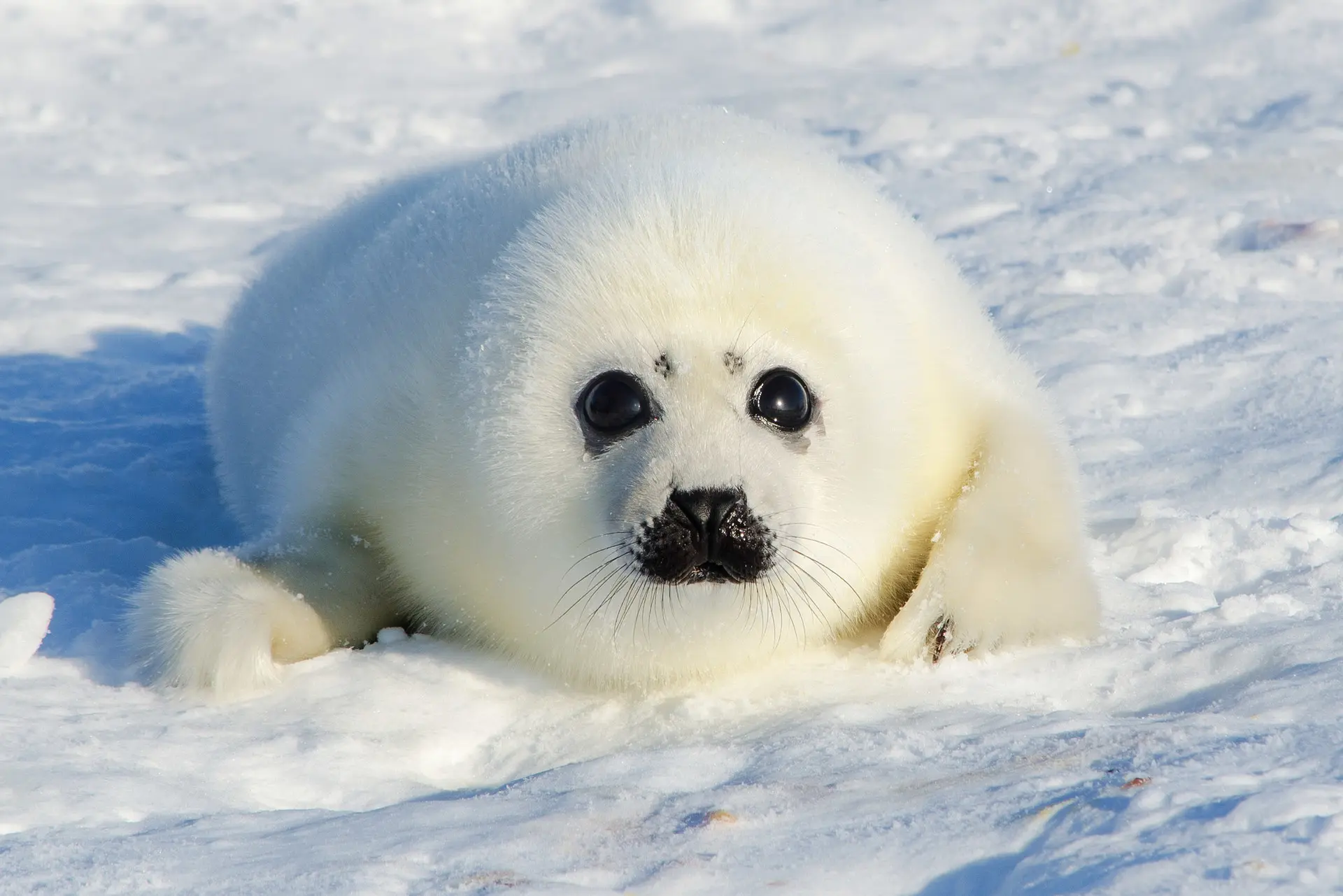
Wildlife Fact Sheet
Harp Seal
Pagophilus groenlandicus
About
Harp seals are one of the Arctic’s most iconic (and adorable!) species. They spend most of the year in the chilly waters of the Arctic and north Atlantic—they are rarely on land except to give birth. If you see large colonies of harp seals on the ice, it’s likely a group caring for their pups.
Adult harp seals have black splotches in their fur but baby harp seals are known for their bright white coat. Baby harp seal’s fluffy, white fur helps camouflage them from predators. As they get older, they shed the white coat for a gray one that is better suited to life in the water.
By the time they are adults, harp seals can spend up to 15 minutes completely submerged before coming back up to the surface for air.
Harp seal pups are born without blubber, so they need lots of attention from their mothers. They stay warm in their white, fluffy coats while their mothers feed them whenever they’re hungry (which is pretty much all the time). Harp seal milk is half fat—10 times more fat than cow’s milk—to help pups bulk up to survive the harsh winters.

Did You Know?
Harp seals are incredibly good swimmers. They typically hunt for fish at depths around 300 feet, but can dive to depths of more than 1,000 feet!
Get Ocean Updates in Your Inbox
Sign up with your email and never miss an update.
Status and Conservation
There are an estimated 4.5 million harp seals in the wild, leading them to be considered a species of “least concern” according to the IUCN. However, their cold Arctic home is greatly at risk due to climate change. As they depend on ice for raising their pups, they are likely to be greatly impacted by melting sea ice.